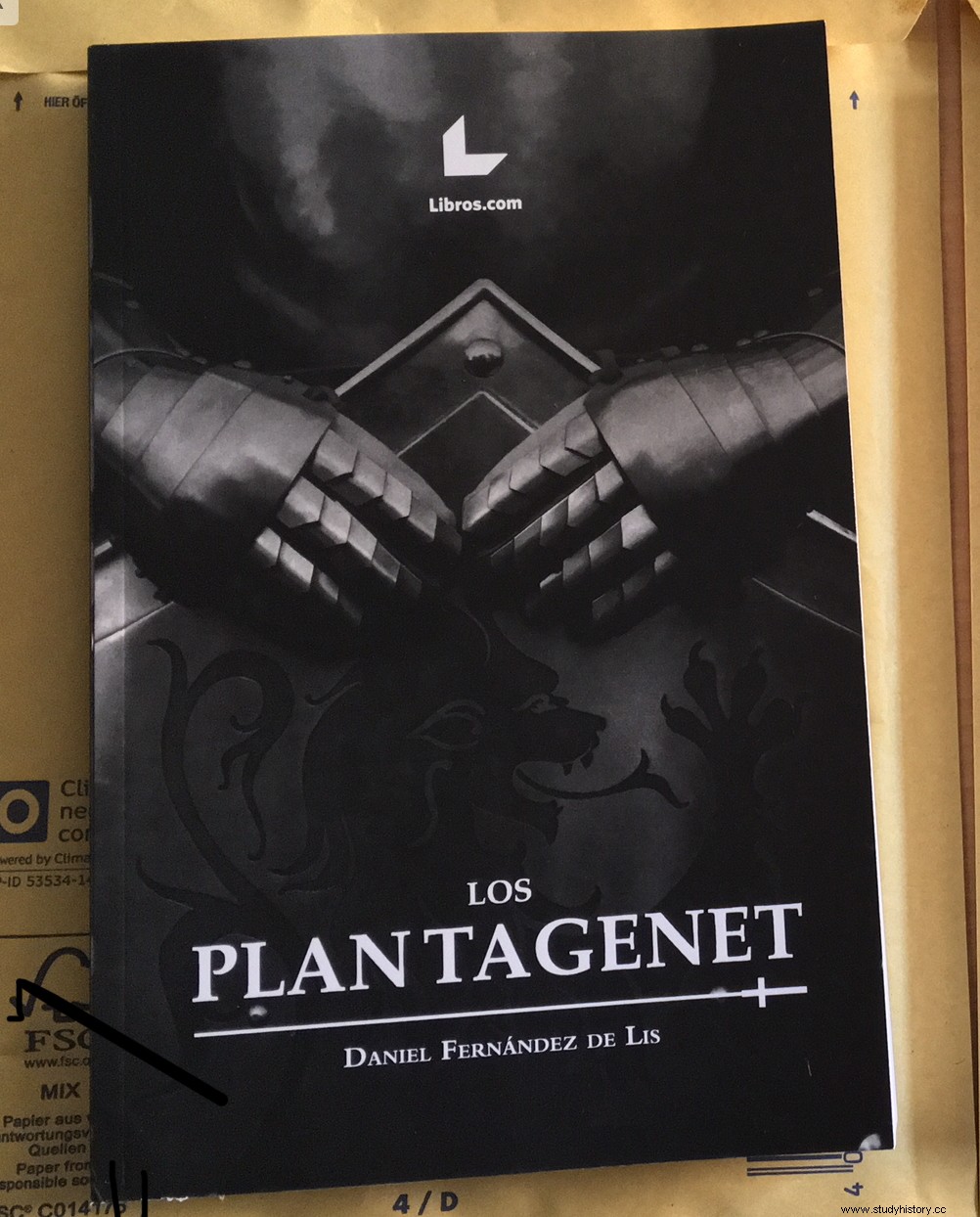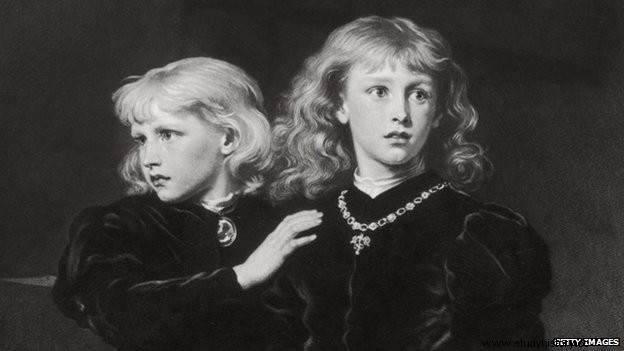 Entry taken from the book The Plantagenets
Entry taken from the book The Plantagenets
The recent discovery of the remains of English King Richard III in a car park in Leicester and the decision to sequence the genome of the British monarch they have made fashionable one of the most controversial and enigmatic characters in the history of England.
In 1483 the English king Edward IV died . His underage son of the same name heads to London for his coronation; On the way he is joined by the regent of the kingdom, Richard, brother of the deceased king. Arriving in the capital he installs the future Edward V in the Tower of London ( at that time the Tower was not a prison but a royal residence). The rest of the sons and daughters of Eduardo IV, along with his widow Isabel Woodville, are housed in sacred at Westminster; Shortly afterwards the other son of the deceased monarch, Richard of York, joins his brother in the Tower. Meanwhile, at the behest of the Regent, Parliament passes a law known as the Titulus Regius declaring null the marriage of Edward IV and Elizabeth Woodville . As a consequence, the children of that marriage are declared illegitimate and they are separated from the line of succession, so the regent is proclaimed king with the name of Ricardo III. Later, the two princes of the Tower disappear, never to be heard from again.
Richard III has traditionally been held responsible for the murder of his nephews, while he has been portrayed as a cruel, devious, tyrannical monarch and self-conscious about his hunchback and his physical handicaps. However, the main sources that have contributed to creating this image (Thomas More and William Shakespeare) wrote in the heyday of the Tudor dynasty. And the first monarch of the dynasty, Henry VII (whose right to the Crown of England was tangential) acceded to the throne after rebelling against a monarch appointed with the approval of Parliament and crowned at Westminster and causing his death at the Battle of Bosworth in 1485 For the successors of Henry VII, it was important to give the origin of his dynasty a patina of respectability, alleging that what he led was a movement fully justified by the need to overthrow a monstrous tyrant, murderer of his own nephews.
There is no doubt that Richard staged a coup to seize power in place of his nephew and that on the way to the throne he ordered the execution of those who might oppose him (such as Anthony Woodville or Lord Hastings). It is also true that the princes were in his custody and that he had the opportunity and the motive to murder them or order them to be done. There is a source, contemporary and not suspected of writing in favor of the Tudors, the Dominican Mancini, who wrote that the princes were confined to more and more interior rooms of the Tower and that their servitude was gradually diminished. When the servants were asked about Edward V they burst into tears, but according to Mancini "if they got rid of him and in what way, I have not been able to discover."
There is also evidence of a pact reached between Henry's mother Tudor, Margaret Beaufort, and Elizabeth Woodville by which both women agreed that if Henry succeeded in overthrowing Richard and came to the throne, he would marry Elizabeth's daughter of the same name, thus uniting the houses of York and Lancaster. That this pact existed is shown by the fact that Henry Tudor swore to marry her if she wore the English crown, in an act in Rouen Cathedral on Christmas Day 1483. And the greatest proof of this is the fact that when Henry Tudor actually ended up ascending the throne, he married Elizabeth of York. For supporters of Ricardo's guilt, this is clear proof that Woodville already knew, when he closed the agreement with Beaufort, that his two eldest sons had died:why else would he grant his daughter's hand and his support? for Henry Tudor to be king?

Several movements claiming the figure of Richard III have emerged for years, calling into question the history of the writers of the Tudor era. From the outset, his defenders point out, even his greatest detractors recognize that, until the death of his brother, Ricardo was a capable and honest administrator, a proven military leader and a faithful and completely loyal servant of Eduardo. If he stood out against his subjects for anything during his brief reign, it was for his strict observance of the laws and for extreme religiosity and morality, bordering on prudery. How could he suddenly transform into the character portrayed by More and Shakespeare? Next, they point out several aspects of the disappearance of the princes of the Tower that do not square with the authorship of Richard III and that seem rather to point to his successor, Henry Tudor.
The first and main point of discrepancy with the theory The official focus is on the fact that when Henry VII took possession of the Crown, he made Parliament pass a law suspending civil rights (Act of Attainder) considering Richard and his followers in Bosworth traitors, in which he accused his predecessor of cruelty and cruelty. tyranny. However, the princes of the Tower are never mentioned in this statement. For the defenders of Ricardo III it is inconceivable that a crime as execrable as the death of two children, nephews in addition to his alleged murderer, was not included in this proclamation. In fact, the only reasonable explanation for them is that at that time the princes were still safe and sound in the Tower and that their disappearance was subsequent to the death of Richard III.
The second aspect that they highlight derives from the answer to the key question of all murder:Who benefited from the crime? Richard III had passed the Titulus Regius and his brother's children had been declared illegitimate. Cut off from the line of succession, the princes no longer posed any threat to Richard (at least, no more a threat than nine other possible heirs from the House of York, whose lives Richard spared). Henry VII, for his part, had become engaged to the princes' sister, Elizabeth of York, in an attempt to legitimize his accession to the throne. For this reason, he repealed the Titulus Regius so that Isabel was once again in the line of succession to the throne. But in that case, so would her brothers, the princes of the Tower, who as males (and if they were alive) preceded her in her line of succession. Evidently, the "Ricardists" point out, Henry VII had a very powerful motive to cause the disappearance of his brothers-in-law.
Thirdly, the behavior of the mother of the princes, Elizabeth Woodville, stands out. From the outset, she agreed without question to let little Richard leave the safety of the hallowed hall of Westminster to join his brother in the Tower; furthermore, after a time, she and her daughters left the shelter at Westminster, attended various parties and receptions organized by Richard III and received a pension granted by him, which is incompatible with any suspicion or news that their children did not they were perfectly safe and located in the Tower.
In 1502 one of Richard III's servants named James Tyrrell was executed after confessing to having murdered the princes at the monarch's request. The protest movements of Ricardo III point out that his confession was obtained under torture and that he was not able to detail the place where his corpses were found, which would discredit (according to them) his testimony. They also question that this confession took seventeen years to produce and that Enrique did not present evidence before his execution.
There are even those who point to the possibility that the two boys did not die, pointing to two suitors who appeared in the following years as the possible Eduardo and Ricardo. This subject is covered in detail in the entries dedicated to these suitors, Lambert Simnel and Perkin Warbeck.
For those who want to know more details about this story, I recommend reading the original book by Josephine Tey The daughter of time in which an English policeman from 1950 who is in bed faces the enigma to overcome boredom and approaches the matter as if it were a police investigation.
Daniel Fernandez deLis. The Plantagenets . Madrid, Libros.com, 2018.
Dan Jones. The Hollow Crown. The Wars of the Roses and the rise of the Tudors . London, Faber &Faber Limited, 2015.
Plantagenets, The Kings Who Made England . London, Ed. William Collins, 2012.
Peter Ackroyd. A History of England. Volume I (Foundations ) . London, Ed. McMillan, 2011.
Roy Strong. The Story of Britain . London, Pimlico Ed., 1998.
Simon Schama. A History of Britain. London, BBC Worldwide Limited, 2000.
Derek Wilson. The Plantagenets, The Kings That Made Britain. Ebook edition, London, QuercusEdition Ltd., 2014
Nathan Amin. The House of Beaufort. The BastardLine that Captured the Crown. Stroud, Amberley Publishing, 2017.
Elizabeth Norton. Margaret Beaufort, Mother of the Tudor Dynasty . Stroud, Amberley Publishing, 2011.
Thomas Penn. Winter King, The Dawn of Tudor England . London, Penguin Books, 2012.
Alice Carter. The women of the Wars of the Roses. Ebook Edition, Editor Alicia Carter, 2013.
Matthew Lewis. The Survival of the Princes in the Tower
